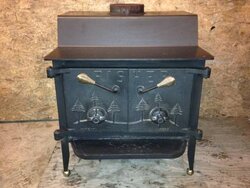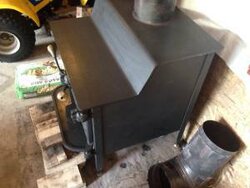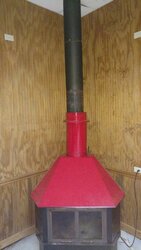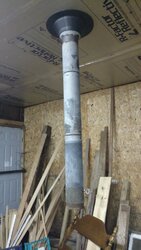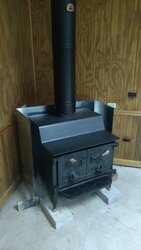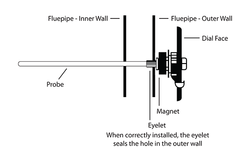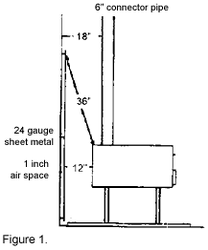Greetings!
I just purchased a "new" 1977ish Fisher Grandpa Bear wood stove that I will be picking up within a month. Its life primarily consisted of being a show piece for a large cabin in Northern Wisconsin. I have a few questions regarding this wood burner. I have been looking on this forum of a while (as a non-member) trying to find more info related to the Grandpa bear. I plan on using this wood burner in my partially finished barn (approx. 2000sqft). There are no water lines to this barn... I do not plan on heating the barn throughout the entire winter. Here are my questions.
1) What is the "burn time" for this unit under normal conditions. Is it possible to get a 12 hour burn?
2) Is this a good wood burner for my application? I did not want a newer unit... I like the older vintage look.
3) just for kicks. What are some other brands you guys/gals would have recommend?
4) Is this entire stove cast iron or is it steel with cast doors?
5) I understand this isn't the most user friendly burner... what is the biggest issues found with this stove
(current/previous owners please weigh in)
Ill be posting pictures of the barn in the near future. Thanks for all the help!
I just purchased a "new" 1977ish Fisher Grandpa Bear wood stove that I will be picking up within a month. Its life primarily consisted of being a show piece for a large cabin in Northern Wisconsin. I have a few questions regarding this wood burner. I have been looking on this forum of a while (as a non-member) trying to find more info related to the Grandpa bear. I plan on using this wood burner in my partially finished barn (approx. 2000sqft). There are no water lines to this barn... I do not plan on heating the barn throughout the entire winter. Here are my questions.
1) What is the "burn time" for this unit under normal conditions. Is it possible to get a 12 hour burn?
2) Is this a good wood burner for my application? I did not want a newer unit... I like the older vintage look.
3) just for kicks. What are some other brands you guys/gals would have recommend?
4) Is this entire stove cast iron or is it steel with cast doors?
5) I understand this isn't the most user friendly burner... what is the biggest issues found with this stove
(current/previous owners please weigh in)
Ill be posting pictures of the barn in the near future. Thanks for all the help!


